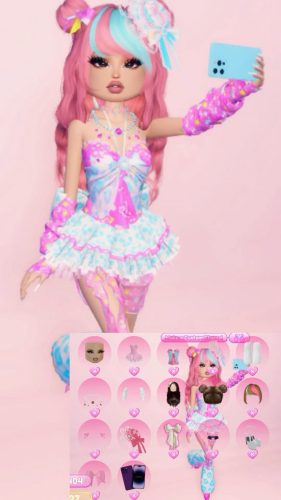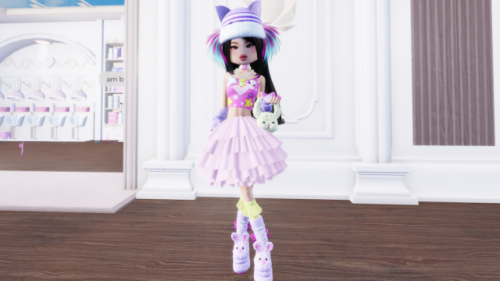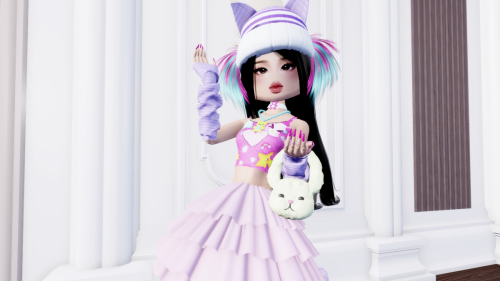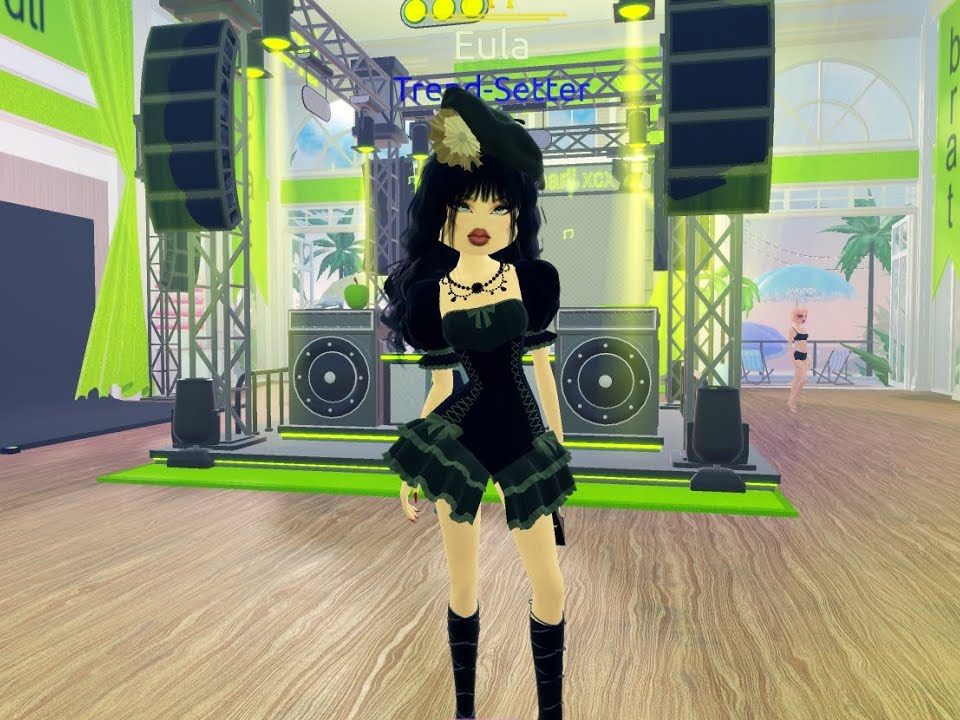
Grunge DTI: Unraveling the Aesthetic and Digital Impact of a Raw Movement
August 12, 2025
Trendy DTI: The Rising Star in Digital Finance and Lifestyle Innovation
August 13, 2025When it comes to cutting-edge street fashion, eclectic subcultures, and urban innovation, few places in the world capture the imagination quite like Harajuku. Nestled in the heart of Tokyo, Japan, Harajuku has long been a global symbol of youth expression, bold aesthetics, and creative rebellion. But what happens when this iconic cultural hub meets modern digital transformation? Enter Harajuku DTI—a term that’s gaining traction among fashion enthusiasts, tech innovators, and digital marketers alike.
In this article, we’ll dive deep into the phenomenon of Harajuku DTI, exploring its roots, significance, and how it’s shaping the future of digital fashion, cultural exchange, and online branding. Whether you’re a fashion lover, a digital strategist, or simply curious about the fusion of tradition and technology, this guide will provide valuable insights into one of Tokyo’s most exciting digital-cultural movements.
What Is Harajuku DTI?
The term Harajuku DTI combines two powerful concepts: Harajuku, the globally renowned fashion district in Tokyo, and DTI, which stands for Digital Transformation Initiative (or Digital Technology Integration, depending on context). While “Harajuku DTI” is not a formally established organization, it’s increasingly used in digital marketing, fashion tech circles, and cultural commentary to describe the integration of Harajuku’s vibrant fashion culture with digital platforms, augmented reality (AR), e-commerce, social media, and blockchain innovations.
Essentially, Harajuku DTI represents the digital evolution of Harajuku’s street style—transforming a physical, location-based cultural phenomenon into a global, interactive, and immersive online experience.
From virtual fashion shows to NFT-based streetwear collections, Harajuku DTI is redefining how we engage with Japanese youth culture in the digital age.
The Origins of Harajuku Fashion
To understand Harajuku DTI, we must first appreciate the rich history of Harajuku fashion itself.
Harajuku became a fashion mecca in the 1980s and 1990s, fueled by Japan’s economic boom and the rise of youth-driven subcultures. Iconic styles such as Lolita, Gyaru, Decora, Visual Kei, and Streetwear emerged from the alleys of Takeshita Street and spread worldwide through magazines, music, and later, the internet.
What made Harajuku unique was its emphasis on self-expression, DIY aesthetics, and fearless blending of genres—punk meets kawaii, vintage meets futuristic, traditional meets avant-garde.
Today, that spirit lives on—not just on the streets of Tokyo, but across digital platforms where fans, designers, and influencers use technology to celebrate and expand Harajuku’s legacy.
How Harajuku DTI Is Shaping Digital Fashion

The concept of Harajuku DTI is most evident in the way digital tools are being used to preserve, innovate, and monetize Harajuku-inspired fashion.
1. Virtual Fashion and AR Try-Ons
Brands and startups are leveraging augmented reality to let users “try on” Harajuku-style outfits through smartphone apps. Imagine pointing your phone at yourself and instantly seeing a pastel Lolita dress or a cyberpunk streetwear ensemble overlaid on your image. This technology, powered by AI and computer vision, is a core component of the Harajuku DTI movement.
2. NFTs and Digital Collectibles
Several Japanese designers have launched NFT collections inspired by Harajuku aesthetics. These digital garments can be worn in virtual worlds, used in video games, or collected as art. For example, digital fashion houses like DressX and RTFKT (acquired by Nike) have collaborated with Harajuku artists to create limited-edition wearable NFTs.
This fusion of street culture and blockchain technology is a hallmark of Harajuku DTI, proving that fashion isn’t just about physical clothing—it’s about identity, community, and ownership in the digital realm.
3. Social Media and Influencer Culture
Instagram, TikTok, and YouTube have become virtual runways for Harajuku fashion. Influencers from Tokyo to Los Angeles showcase daily Harajuku-inspired looks, often using hashtags like #HarajukuStyle, #KawaiiFashion, and #StreetTokyo.
Platforms like TikTok have even launched AR filters that emulate Harajuku makeup, hairstyles, and accessories—further blurring the line between physical and digital fashion. This widespread online engagement is a key pillar of the Harajuku DTI ecosystem.
4. E-Commerce and Global Access
Thanks to Harajuku DTI initiatives, fans worldwide can now purchase authentic Harajuku fashion online. Websites like WEGO, Dolls Kill, and YesStyle offer curated selections of Japanese streetwear, often with digital lookbooks and virtual styling tools.
Some brands are even using AI to recommend outfits based on user preferences, skin tone, and body type—enhancing the shopping experience through personalization, a core tenet of digital transformation.
The Cultural Impact of Harajuku DTI
Beyond fashion, Harajuku DTI is fostering cross-cultural dialogue and digital empowerment.
- Preserving Cultural Heritage: By digitizing vintage Harajuku looks and documenting subcultures, Harajuku DTI helps preserve a rapidly evolving cultural phenomenon for future generations.
- Empowering Independent Creators: Small designers and artists can now reach global audiences without relying on traditional gatekeepers. Platforms like Zenni and Shopify allow Harajuku-inspired creators to launch digital storefronts and connect directly with fans.
- Promoting Inclusivity: The digital nature of Harajuku DTI allows people of all genders, body types, and backgrounds to participate in the culture. Virtual avatars and digital fashion eliminate physical barriers, making Harajuku style more accessible than ever.
Challenges and Criticisms

While Harajuku DTI offers exciting possibilities, it’s not without challenges:
- Cultural Appropriation: As Harajuku fashion spreads globally, there’s a risk of diluting its cultural significance or misrepresenting its roots. Authentic engagement and credit to Japanese creators are essential.
- Digital Divide: Not everyone has access to high-speed internet or AR-enabled devices, which could exclude certain communities from participating in the Harajuku DTI movement.
- Sustainability Concerns: While digital fashion reduces physical waste, the energy consumption of blockchain and data centers raises environmental questions.
Addressing these issues is crucial for ensuring that Harajuku DTI evolves in an ethical and inclusive way.
The Future of Harajuku DTI
Looking ahead, Harajuku DTI is poised to become a blueprint for how physical cultural hubs can thrive in the digital era.
We can expect to see:
- Metaverse Fashion Weeks featuring Harajuku designers
- AI-generated Harajuku patterns based on historical data and user input
- Interactive fashion apps that teach users how to style like a Harajuku native
- Blockchain-based authenticity verification for limited-edition streetwear
Moreover, collaborations between Japanese tech companies (like Sony or SoftBank) and fashion schools in Harajuku could accelerate innovation, turning the district into a real-world lab for digital fashion experimentation.
Frequently Asked Questions (FAQs) About Harajuku DTI

Q1: What does DTI stand for in Harajuku DTI?
A: DTI commonly stands for Digital Transformation Initiative or Digital Technology Integration. In the context of Harajuku DTI, it refers to the integration of digital technologies with Harajuku’s fashion and cultural ecosystem.
Q2: Is Harajuku DTI an official organization?
A: No, Harajuku DTI is not a formal institution. It’s a conceptual term used to describe the digital evolution of Harajuku fashion and culture through technology, social media, and online platforms.
Q3: Can I experience Harajuku DTI without visiting Japan?
A: Absolutely! Through virtual fashion apps, online stores, social media, and digital exhibitions, you can engage with Harajuku DTI from anywhere in the world.
Q4: How is Harajuku DTI influencing global fashion?
A: Harajuku DTI is inspiring designers worldwide to embrace digital fashion, experiment with AR/VR, and explore new business models like NFT wearables and virtual styling.
Q5: Are there any Harajuku DTI events or exhibitions?
A: Yes—digital fashion weeks, online art shows, and virtual pop-up shops often feature Harajuku-inspired themes. Keep an eye on platforms like Decentraland, Roblox, and Vogue’s Metaverse events.
Q6: Can I create my own Harajuku DTI content?
A: Definitely! Whether you’re a designer, artist, or content creator, you can contribute to the Harajuku DTI movement by sharing original looks, digital art, or tech-driven fashion projects online.
Q7: Is Harajuku DTI only about fashion?
A: While fashion is central, Harajuku DTI also encompasses music, art, language, and lifestyle. It’s a holistic digital representation of Harajuku’s youth culture.
Conclusion: Embracing the Digital Heart of Harajuku
Harajuku DTI is more than a buzzword—it’s a cultural shift. It represents the seamless fusion of Tokyo’s most iconic street style with the limitless possibilities of digital innovation. From AR filters to NFT wardrobes, from global influencers to AI stylists, Harajuku DTI is redefining what it means to be fashionable in the 21st century.
As technology continues to evolve, so too will the ways we experience, share, and celebrate subcultures like Harajuku. By embracing Harajuku DTI, we honor the past while building a more inclusive, creative, and connected future.
Whether you’re walking down Takeshita Street or scrolling through a digital fashion gallery, the spirit of Harajuku lives on—now amplified by the power of the digital world.



